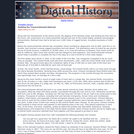
Brief history of the building of the Transcontinental Railroad in the United States.
- Subject:
- Arts and Humanities
- History
- U.S. History
- Material Type:
- Reading
- Provider:
- University of Houston
- Provider Set:
- Digital History
- Date Added:
- 06/16/2014

Brief history of the building of the Transcontinental Railroad in the United States.
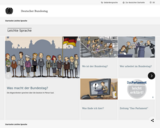
Resource: This is a website made by the German Bundestag explaining where, what and how their government works.
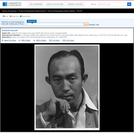
Bunkichi Hayashi, bust portrait, facing front, holding hand to face. Title transcribed from Ansel Adams' caption on verso of print. Original neg. no.: LC-A35-4-M-16-B. Gift; Ansel Adams; 1965-1968. Forms part of: Manzanar War Relocation Center photographs.
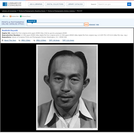
Bunkichi Hayashi, bust portrait, facing front. Title transcribed from Ansel Adams' caption on verso of print. Original neg. no.: LC-A35-4-M-16-A. Gift; Ansel Adams; 1965-1968. Forms part of: Manzanar War Relocation Center photographs.

Bunkichi Hayashi (left?), seated at table with two other men, one pointing to paper with pencil. Title transcribed from Ansel Adams' caption on verso of print. Original neg. no.: LC-A35-5-M-9. Gift; Ansel Adams; 1965-1968. Forms part of: Manzanar War Relocation Center photographs.
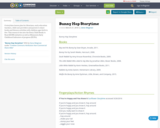
A storytime lesson plan for librarians, early education teachers, child care providers and parents to share books and literacy activities with children ages birth to five. This resource ties into the Every Child Ready to Read (ECRR) initiative as well as Minnesota Early Childhood Indicators of progress (ECIPs).

(Public Domain Reader)
Short Description:
"A strange creation. Part study, part Platonic dialogue, part novel, it all adds up to a fascinating, but uneven, literary artifact.The Bureaucrats is Balzac's study of the French bureaucracy under the reign of Charles X in the 1920s. It begins with about 100 pages of essentially prefatory material that serially introduces the dozens of characters that populate this novel, explaining where they came from, what role they play in the bureaucracy, and what their plans for the future contain. There are little bits of storytelling in the first part, but mostly Balzac is setting up the story--which takes up the next 150 pages of the book." - Jason, goodreads.com
Long Description:
“A strange creation. Part study, part Platonic dialogue, part novel, it all adds up to a fascinating, but uneven, literary artifact.
The Bureaucrats is Balzac’s study of the French bureaucracy under the reign of Charles X in the 1920s. It begins with about 100 pages of essentially prefatory material that serially introduces the dozens of characters that populate this novel, explaining where they came from, what role they play in the bureaucracy, and what their plans for the future contain. There are little bits of storytelling in the first part, but mostly Balzac is setting up the story–which takes up the next 150 pages of the book.” – Jason, goodreads.com
Word Count: 75661
(Note: This resource's metadata has been created automatically as part of a bulk import process by reformatting and/or combining the information that the author initially provided. As a result, there may be errors in formatting.)
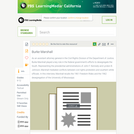
As an assistant attorney general in the Civil Rights Division of the Department of Justice, Burke Marshall played a key role in the federal government's efforts to desegregate the South. Representing the presidential administrations of John F. Kennedy and Lyndon B. Johnson, Marshall mediated conflicts between civil rights protesters and southern white officials. In this interview, Marshall recalls the 1961 Freedom Rides and the 1962 desegregation of the University of Mississippi.
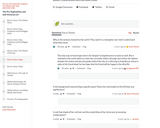
Sir Edward Coley Burne-Jones, Hope, 1896, 179 x 63.5 cm, oil on canvas (Museum of Fine Arts, Boston). Created by Beth Harris and Steven Zucker.
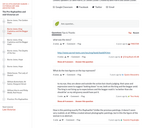
Edward Burne-Jones, King Cophetua and the Beggar Maid, oil on canvas, 1884 (Tate Britain, London) Speakers: Dr. Beth Harris, Dr. Steven Zucker. Created by Beth Harris and Steven Zucker.
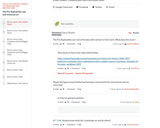
Sir Edward Coley Burne-Jones, The Golden Stairs, 1880, oil on canvas 2692 x 1168 mm (Tate Britain, London). Created by Beth Harris and Steven Zucker.
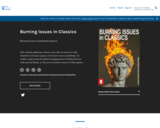
This volume addresses various ways that we interact with, refashion and reuse aspects of ancient Greece and Rome. Its studies range from the political engagement of Italian fascists with ancient Rome, to the use of ancient Greece in video games. The chapters each take on a ‘burning issue’ of identity or ownership, that is, how we identify with ancient Greeks and Romans, as well as drawing (often troubling) elements of our identity from them. In addition, they address the question: which of us feel that we own the past? Does Classics belong to everyone, or has it been coopted by an elite few?
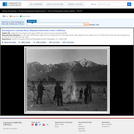
Group of men and boys standing around a small brush fire holding shovels, a pitchfork stands in the right foreground, mountains in background. Title transcribed from Ansel Adams' caption on verso of print. Original neg. no.: LC-A35-6-M-9. Gift; Ansel Adams; 1965-1968. Forms part of: Manzanar War Relocation Center photographs.
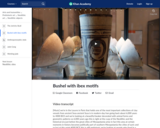
Bushel with ibex motifs, 4200--3500 B.C.E., Susa I period, necropolis, acropolis mound, Susa, Iran, painted terra-cotta, 28.90 x 16.40 cm, excavations led by Jacques de Morgan, 1906-08 (Musée du Louvre, Paris) Speakers: Dr. Beth Harris and Dr. Steven Zucker.

Business communication also happens across channels. We have come a long way as the human race in terms of the channels we use to communicate with each other. With the development of language, much of communication was oral, with humans passing knowledge and information to other humans through the mouth. Sometimes we would use actions, whether through body language or through the use of other methods, such as smoke signals. However, most of communication was restricted to oral communication. With the invention of writing, we had yet another channel of communication, which turned out to be a little more permanent than speech. Information could now be recorded for posterity and knowledge could be passed down from father to son without the loss of accuracy.

This text was adapted by faculty at Hillsborough Community College.
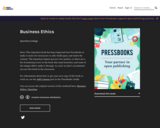
Short Description:
Note: This OpenStax book has been imported into Pressbooks to make it easier for instructors to edit, build upon, and remix the content. The OpenStax import process isn't perfect, so there are a few formatting errors in the book that need attention, and some of the images didn't make it through. As such, we don't recommend you use this book in the classroom. For information about how to get your own copy of this book to work on, see the Add Content part in the Pressbooks Guide. You can access the original version of this textbook here: Business Ethics: OpenStax.
Long Description:
Business Ethics is designed to meet the scope and sequence requirements of the single-semester business ethics course. This title includes innovative features designed to enhance student learning, including case studies, application scenarios, and links to video interviews with executives, all of which help instill in students a sense of ethical awareness and responsibility.
Word Count: 165322
ISBN: ISBN-10: 1-947172-57-3, ISBN-13: 978-1-947172-57-9
(Note: This resource's metadata has been created automatically by reformatting and/or combining the information that the author initially provided as part of a bulk import process.)
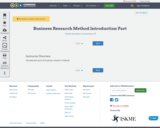
Introduction part of business research method
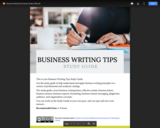
The Business Writing Tips Study Guide includes one student/instructor study guide (and a corresponding 45-question Business Writing Tips Test Bank) based on the GCFLearnFree.org Business Etiquette series. The study guide is designed for test preparation, lesson planning, review, and assessment. It covers business writing and professional communication basics for university and professional learners. Concepts include: business writing basics, effective emails, business letters, business memos, business reports, formatting, business instant messaging, and plagiarism.
Business Writing Tips Study Guide and Test Bank Development: This resource was made possible by the Texas Tech University Libraries Open Educational Resources Adoption Incentive Grant. For further information about the OER grant, see the TTU Libraries site.
The Business Writing Tips study guide is available to any instructor, student, or professional learner who agrees to the Attribution-NonCommercial 4.0 International (CC BY-NC 4.0) terms of use.

The Business Writing Tips Test Bank includes 45 multiple choice, short answer, true/false, and fill in the blank assessment questions (and a corresponding student/instructor Business Writing Tips Study Guide), based on the GCFLearnFree.org Business Etiquette series. The test bank is formatted in Microsoft Word and ready for upload to a Blackboard LMS quiz maker. The test questions cover business writing and professional communication basics for university and professional learners. Concepts include: business writing basics, effective emails, business letters, business memos, business reports, formatting, business instant messaging, and plagiarism.
Business Writing Tips Study Guide and Test Bank Development: This resource was made possible by the Texas Tech University Libraries Open Educational Resources Adoption Incentive Grant. For further information about the OER grant, see the TTU Libraries site.
The Business Writing Tips Test Bank is available to any instructor, student, or professional learner who agrees to the Attribution-NonCommercial 4.0 International (CC BY-NC 4.0) terms of use.